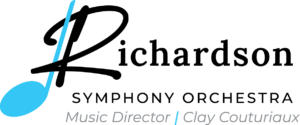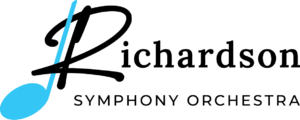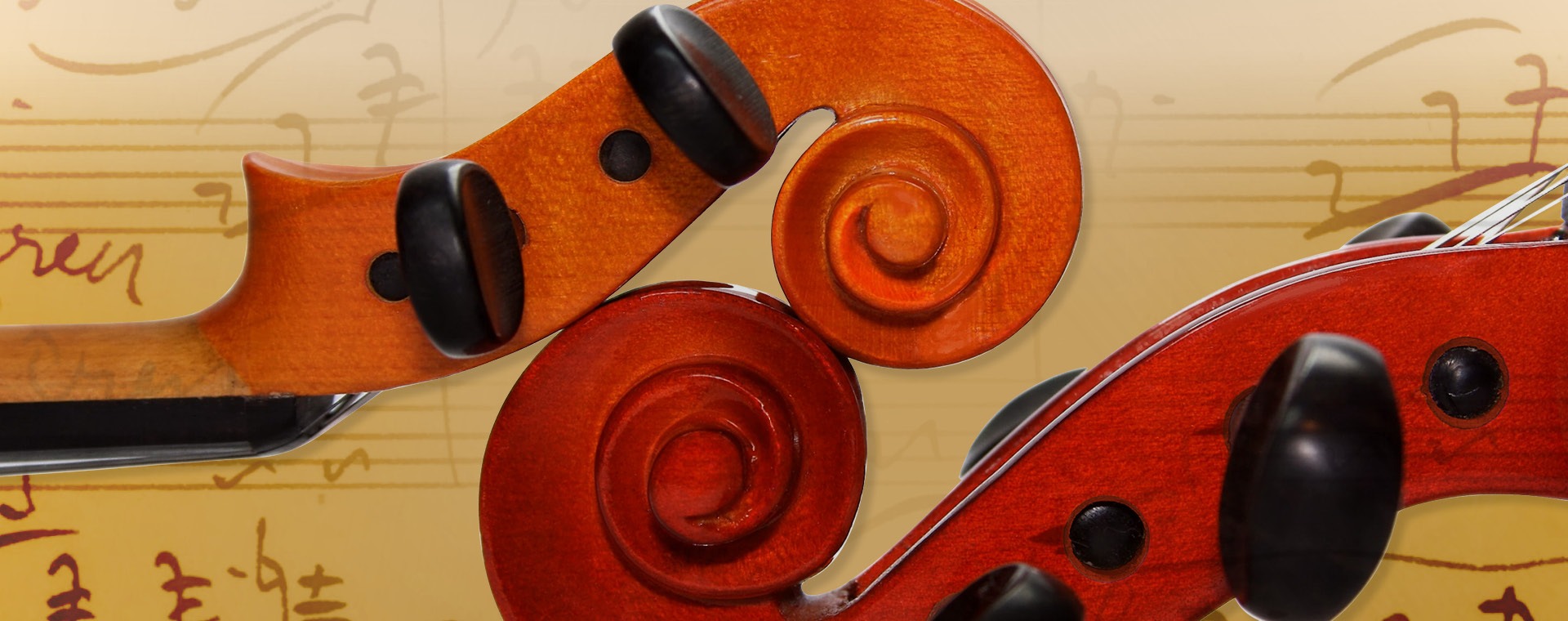
Copland, Kodály, & Brahms
COPLAND: Appalachian Spring
KODÁLY: Galánti táncok (Dances of Galánta)
BRAHMS: Double Concerto for Violin & Cello in A minor, Op. 102
Chloé Kiffer, violin
Horacio Contreras, cello
The performance is approximately 95 minutes including a 20-minute intermission after the second piece
Buy Tickets HERE
Overview
Dive into the majestic world of Aaron Copland’s iconic Appalachian Spring Suite, a collection of movements compiled from the ballet under the same name, this orchestral gem captures the essence of the American landscape with its lush melodies and evocative harmonies. The orchestral suite is cast in eight uninterrupted sections, opening with a slowly blooming introduction before the unison strings burst into an elated Allegro, setting the stage for a journey through the sprawling wilderness of the Appalachian Mountains. Featuring a set of variations on the beloved Shaker tune “Simple Gifts,” the suite takes you on a captivating musical adventure, where every note paints a vivid picture of nature’s beauty and tranquility.
Feel the pulse of Hungarian folk music come alive with Zoltán Kodály’s Galánti táncok (Dances of Galánta), a vibrant and spirited composition that showcases the rich heritage of Eastern European melodies. From lively dances to soulful tunes, Kodály’s work invites you to revel in the infectious rhythms and colorful orchestrations, while simultaneously transporting you to a world overflowing with joy and celebration.
Step into the realm of romanticism with Johannes Brahms’s Double Concerto for Violin & Cello in A minor, Op. 102, featuring the amazing artistry of Chloé Kiffer on violin and Horacio Contreras on cello. Brahms’s masterpiece unfolds with sublime melodies and poignant harmonies, as the violin and cello engage in a captivating dialogue, weaving together themes of passion, longing, and introspection. Experience the beauty and depth of this concerto as it unfolds before you, leaving you enraptured with its emotional intensity and musical brilliance.
Indulge in an evening of musical enchantment where the beauty of nature, the vivacity of folk culture (both American and Eastern European), and the depth of human emotion converge in perfect harmony. Join us as we embark on a journey through landscapes both real and imagined, where melodies tell stories and emotions soar.
Program Details
COPLAND: Appalachian Spring Suite
Length: c. 25 Minutes, including 8 continuous sections performed without stopping
Composer: Aaron Copland, born November 14, 1900 in New York City, NY and died December 2, 1990 (age 90) in North Tarrytown, NY
Composed: 1943-1944
What else happened in 1944?
- Premier of Samuel Barber’s 2nd Symphony with the Boston Symphony
- Dimitri Shostakovich’s 8th Symphony premieres in New York
- Film musical “Meet Me in St Louis”, starring Judy Garland opens in Missouri.
KODÁLY: Galánti táncok (Dances of Galánta)
I. Lento
II. Allegretto moderato
III. Allegro con moto, grazioso
IV. Allegro
V. Allegro vivace
Length: c. 15 minutes, including 5 continuous sections performed without stopping (followed by a 20-minute intermission)
Composer: Zoltán Kodály was born on December 16, 1882 in Kecskemét, Hungary and died on March 6, 1967 (age 84) in Budapest, Hungry
Composed: 1933
What else happened in 1933?
- Adolf Hitler appointed Reich Chancellor of Germany
- Albert Einstein arrives in US as a refugee from Nazi Germany
- Franklin D. Roosevelt survives an assassination attempt in Miami, FL as president-elect, later becomes the 32nd President
- First female US Cabinet member, Frances Perkins, appointed Secretary of Labor
- King Kong premieres at Radio City Music Hall
- 1st Major League Baseball All-Star Game and Babe Ruth hits first All-Star home run
- Fox Films signs Shirely Temple (age 5) to a studio contract.
BRAHMS: Double Concerto for Violin & Cello in A minor, Op. 102
I. Allegro
II. Andante
III. Vivace non troppo
Soloists: Chloé Kiffer, violin & Horacio Contreras, cello
Length: c. 33 minutes in 3 separate movements
Composer: Johannes Brahms was born May 7, 1833 in Hamburg, Germany and died on April 2, 1897 (age 63) in Vienna, Austria
Composed: 1887
What else happened in 1887?
- Eiffel Tower construction begins in Paris, France
- Giuseppe Verdi’s Opera “Otello” premieres at La Scala (Milan, Italy) after being compositional dormant for 15 years.
- Philadelphia celebrates 100th Anniversary of the US Constitution
Performers
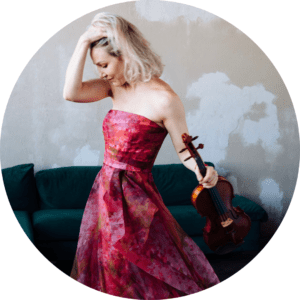
Violinist Chloé Kiffer, native of France, has received enthusiastic praise by The New York Times for her “pure and beautiful tone” and The Greenwich Sentinel for being “…a star in every sense: performance, exquisite technique and beauty””.
Performing solo and orchestra engagements throughout Europe, North and South America, the Middle East, and Asia, Kiffer has appeared at the Théâtre des Champs-Élysées in Paris, Beethoven Hall in Bonn, Frankfurt Radio Symphony Hall, Tel Aviv Opera, and Beijing National Center. In October 2015, Kiffer made her Carnegie Hall debut performing Tchaikovsky’s Violin Concerto in Stern Auditorium. Kiffer has collaborated with artists including Philippe Muller, Shmuel Ashkenasi, Timothy Eddy, the Emerson String Quartet, and pianist Alexandre Moutouzkine.
Kiffer is on the faculties of the Manhattan School of Music and the University of North Texas. Her students have won prizes at national and international competitions. She is a sought-after guest teacher and faculty member for conservatories and festivals around the world—the Heifetz International Music Institute, Miami Music Festival, Beijing International Music Festival and Academy, Chamber Music International in Texas, MusicFest Perugia in Italy, Paris International Music Academy and MusicAlps in France.
Kiffer is a laureate of the Bleustein-Blanchet Foundation. She graduated from the Conservatoire National Supérieur de Musique de Paris and earned postgraduate degrees from the Manhattan School of Music under Patinka Kopec and Pinchas Zukerman. Kiffer received her Doctor of Musical Arts degree from Stony Brook University.
In 2019 Kiffer released an album of the Ravel violin sonatas on the Steinway & Sons label with pianist Alexandre Moutouzkine.
Chloé Kiffer performs on a violin that was made for her by luthier Samuel Zygmuntowicz (Brooklyn, NY, 2023).
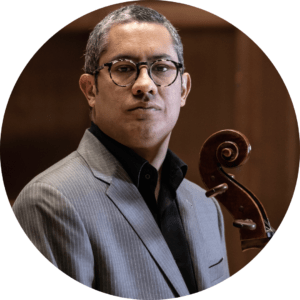
Venezuelan cellist Horacio Contreras has gained esteem through a multifaceted career as a concert cellist, chamber musician, pedagogue, and scholar. He has collaborated with prestigious institutions across the Americas and Europe as a concerto soloist, a recitalist, a chamber musician, and a master class clinician.
Highlights of his career include solo performances with the Simón Bolívar Symphony Orchestra and the Municipal Orchestra of Caracas (Venezuela), the EAFIT University Orchestra (Colombia), the Camerata de France (France), and the Lawrence Symphony Orchestra and the Music Institute of Chicago’s Chamber Orchestra in the US; participations in series and festivals including Salzburg, Casals, Schubert Club, New York’s Chopin & Friends, Indiana University’s Salon Latino, and Chicago’s Celebración de la Música Latinoamericana; and master classes at Bloomington, Juilliard, Michigan, Oberlin and the ASTA National Convention, as well as at many renowned programs throughout the Americas. Recent projects include world premieres of works by Ricardo Lorenz, Miguel del Águila and Reinaldo Moya, the recording of the works for cello and piano by Ricardo Lorenz with the Blue Griffin record label, the recording of an album with the Reverón Piano Trio featuring piano trios by Villa-Lobos, Ponce, and Turina with the IBS Classical record label, and a full edition of Ricardo Castro’s cello concerto commissioned by Afa Dworkin and the Sphinx Organization.
Horacio serves on the faculty of the University of North Texas, the Music Institute of Chicago and the University of Michigan’s MPulse summer institute Center Stage Strings. His students have made solo recordings, soloed nationally and internationally, attended festivals such as Kronberg, Aspen, Orford and Académie Internationale d’Été de Nice, and won awards at international and national competitions. They have continued their education at institutions including Michigan, San Francisco Conservatory, the Haute École de Musique de Lausanne in Switzerland, and Mannheim and Weimar in Germany. Some of his former students have pursued successful careers as orchestral musicians, chamber musicians, teachers, and freelancers. Others have devoted their energies to grow in other professional areas and enjoy a meaningful connection with music through the cello.
He is the founder and artistic director of Strings of Latin America, an official partner to the Sphinx Organization with the purpose of social engagement through the promotion of diversity in the classical music world. As a part of his efforts to help diversifying the repertoire, he coauthored The Sphinx Catalog of Latin-American Cello Works, a comprehensive database with information about works for cello written by Latin American composers created in partnership with the Sphinx Organization and CelloBello.org. His pedagogic book Exercises for the Cello in Various Combinations of Double-Stops has received recognition as a significant contribution to the instrument’s literature.
He is a member of the Four Corners Ensemble and the Reverón Piano Trio. He started his musical studies in Venezuela through El Sistema, and holds degrees from the Conservatoire National de Région de Perpignan, France, the Escola de Musica de Barcelona, Spain, and the University of Michigan. He is represented by Meluk Kultur Management and Halac Artists together with his colleagues of the Reverón Piano Trio.
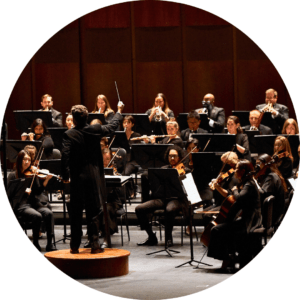
Just north of Dallas and nestled in the vibrant city of Richardson, Texas, the Richardson Symphony Orchestra (RSO) embodies the essence of what it means to be a regional symphony orchestra. Led by Maestro Clay Couturiaux, the RSO’s journey is a testament to unwavering dedication and musical excellence.
Since its founding in 1961, the RSO has remained steadfast in its mission to enrich lives through the transformative power of music. From enchanting renditions of classical staples to daring explorations of contemporary works, the orchestra’s repertoire mirrors the rich tapestry of human emotion and experience.
The symphony has captivated audiences with electrifying performances, seamlessly blending precision and passion. Under Maestro Couturiaux’s guidance, each note resonates with soul-stirring depth, leaving listeners enraptured.
Beyond the concert hall, the RSO is a beacon of community engagement, nurturing young talent and enriching lives through the transformative power of music. With every crescendo, the orchestra reaffirms its status as a cultural gem, enriching the tapestry of the city of Richardson and beyond with symphonic splendor.
Extras
Program Notes from the Composer, Aaron Copland for Appalachian Spring
Although the ballet had 14 segments; the orchestral suite reduces the work down to eight continuous movements. The setting for both works is the early 19th century, on the site of a Pennsylvania farmhouse that was a wedding gift to a young couple. Copland wrote, “The bride-to-be and the young farmer-husband enact the emotions, joyful and apprehensive, which their new domestic partnership invites. An old neighbor suggests, now and then, the rocky confidence of experience. A revivalist and his followers remind the new householders of the strange and terrible aspects of human fate. At the end, the couple are left quiet and strong in their new house.” For the orchestral suite, the composer provided the following road map to guide the guest’s experience:
I. Very slowly. Introduction of the characters, one by one, in a suffused light.
II. Fast. Sudden burst of unison strings in A major arpeggios starts the action. A sentiment both elated and religious gives the keynote to this scene.
III. Moderate. Duo for the Bride and her Intended — scene of tenderness and passion.
IV. Quite fast. The Revivalist (a member of the clergy who conducts revivals) and his flock. Folksy feeling — suggestions of square dances and country fiddlers.
V. Still faster. Solo dance of the Bride — presentiment of motherhood. Extremes of joy, fear, and wonder.
VI. Very slowly (as at first). Transition scene to music reminiscent of the introduction.
VII. Calm and flowing. Scenes of daily activity for the Bride and her Farmer husband. There are five variations on a Shaker theme. The theme, sung by a solo clarinet, was taken from a collection of Shaker melodies compiled by author Edward D. Andrews, and published under the title “The Gift to Be Simple.” The melody most borrowed and used almost literally is called “Simple Gifts.”
VIII. Moderate. Coda. The Bride takes her place among her neighbors. At the end the couple are left “quiet and strong in their new house.” Muted strings intone a hushed prayerlike chorale passage. The close is reminiscent of the opening music.
